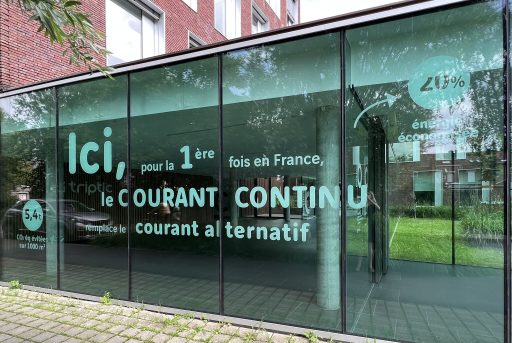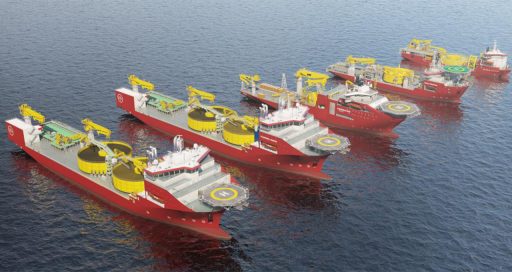“Economic growth and climate objectives should not be seen as incompatible”
Reading time: 6 min
Guillaume Garric, Director of the Omexom brand, analyses the major issues facing the world energy market.
![]()
The 20th World Energy Markets Observatory published by Capgemini in November sets out four findings: China is becoming a major player in the European electricity sector; economic growth is calling the climate change objectives into question; the need to balance grids that include power from renewable energy sources often limits “green” production; and lastly, the utility sector must upgrade to integrate new technologies. Guillaume Garric, Director of the Omexom brand (VINCI Energies) analyses and discusses the issues raised in this study.
One of the key findings of the Capgemini study is the confirmation of China’s major role in the energy economy. How should the European players in the sector factor this into their strategies?
China is a major market player as both an investor and a technology developer, particularly in photovoltaic solar. It recently attempted to purchase a stake in German TSO 50Hertz, but Germany thwarted the acquisition in a move to protect its strategic assets in the sensitive context of consolidation in the utilities sector. Chinese engineers know how to build ultra-high voltage lines rated at 1,000 kV, with which they could transmit electricity from Laos to China and which could enable them to build electricity superhighways to Europe to sell their power there. As a worldwide integrator, Omexom sees this development as a confirmation of the strong scope for expansion in the energy market. The finding prompts us to boost our capabilities to take advantage of the potential on all continents.
The WEMO report also stresses the negative impact of economic growth in 2017 on climate objectives. What should be done in the energy sector to reconcile economic growth and climate objectives?
As Omexom sees it, economic growth and climate objectives are not mutually incompatible. Green growth – “smart” growth – is a form of growth. Acquiring the ability to meet the COP objectives can generate growth, virtuous growth, ranging from the production of clean energy (photovoltaic solar, wind, hydroelectric) to the development of smart grid and energy efficiency projects. We for our part have opted to focus on promising projects such as energy performance contracts, renewables, smart grids, and smart cities. We are actively involved in the energy transition. Many people think of the city of the future only in terms of big data, but in fact the real focus needs to be on energy efficiency, the performance of resources in the broad sense of the term, and on the way these resources are used.
The decline in wind energy and battery prices does not offset the additional cost of grid management to handle intermittent generation. What are the priorities in grid optimisation?
We need to concentrate on fine-tuning grid management. This means being able to manage the smart grid by using big data to balance electricity consumption and production in real time. Apart from storage solutions, the smart grid and flexibility make it possible to integrate intermittent generation. A company belonging to the VINCI Energies Group, Smart Grid Energy, specialises in ways to work on the grid to support load management – in other words, to shut down a factory in one place or start up a power plant in another in order to balance the grid. This fine-tuned management is possible because big data and predictive technology provide the real-time overview of the grid that is required to support load management and to manage the various local production assets, local storage, and the possibilities offered by European interconnection of the various grids.
What role do local authorities play in the energy transition?
As the main local decision-makers, local authorities must – and in fact increasingly do – have a policy-oriented vision of the energy transition within their area. They must look beyond energy efficiency and production and consider the energy transition as it impinges on their area in every respect. We have roots in local areas where authorities are increasingly focused on consumption patterns, electric vehicles, transport, and the city in the broad sense of the term, and are working with users on these issues. We are helping municipalities such as Rillieux la Pape near Lyon and Marmagne in central France to offer their citizens greener, more cost-effective consumption.
The Capgemini report also refers to the need for utilities to step up their digital transformation. What are the priorities here?
There are two issues: the energy transition, which is a goal, and the digital transformation, which is the most powerful tool for achieving that goal. Big data is the way of the future when it comes to prediction, and it offers the utilities a way to carry out asset management. There must be a move to sensors, IoT, and open data, which we believe in very strongly since data sharing can create value. But that is not enough. Thought must also be given to cybersecurity. The digital tools supporting the energy transition must be protected because data must be protected. We bring to our customers a three-level vision: the energy transition objective, the digital tools to achieve it, and the tools to protect the data network. VINCI Energies’ strength lies in the fact that we cover all these areas of expertise within a single group.
Learn more:
https://www.capgemini.com/





